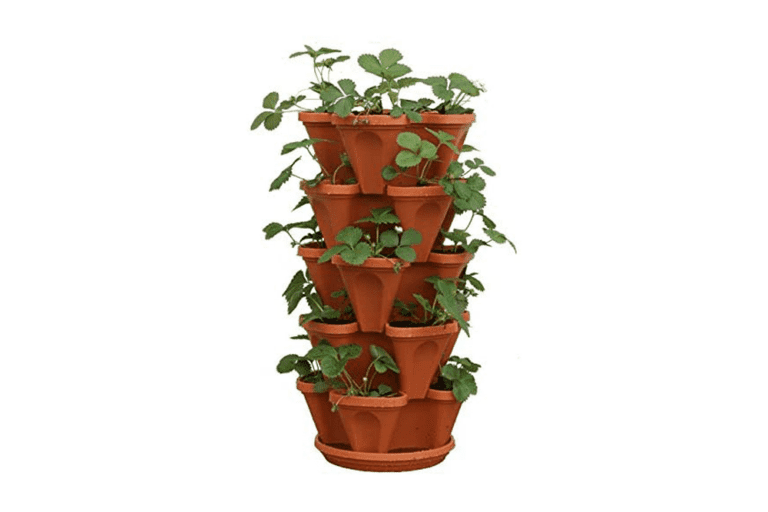Efficiently Growing Rosemary In Your Herb Garden
To grow rosemary in your garden, start with a seedling from a garden center or a cutting taken from another plant. You can grow rosemary outdoors year round in zone 8 or above. In zones 7 or lower, you’ll want to bring the plant inside for the winter. You can also grow rosemary indoors all year round, but making sure it gets enough light inside can be tricky. To thrive, rosemary needs adequate moisture and regular pruning to keep its growth under control.
Planting Rosemary
You can grow rosemary from seed or by taking cuttings of an existing plant. You can also purchase seedlings at a garden center to transplant into your garden or a larger container.
Usually, the recommended way to plant rosemary is from a cutting or transplant. Plants grown from seed might not come to variety, according to Fine Gardening. Plus, rosemary seeds have a reputation for not germinating.
When you can plant rosemary depends on where you live. If you are in zone 7 or lower, it’s best to plant rosemary in the spring. In zone 8 or higher, you can also plant in the fall, as rosemary will be able to survive the mild winters in those zones.
Give your rosemary plants enough space in the garden when planting. Ideally, each plant will be about two feet apart. Under the right conditions, a rosemary shrub can grow up to four feet across and up to four feet high.
The video from Home Handy Hints shows you how to get a small rosemary plant established in your garden and offers tips for caring for the plant once it’s in the ground.
Taking Rosemary Cuttings
One way to make a new rosemary plant is to take a small cutting from an existing plant. If you have friends or relatives who grow rosemary, you can ask them to give you a cutting. Once you’ve gotten the cutting, strip all but the top few leaves from the stem.
https://youtu.be/_8GW9hCrfZo
In the video, gardener Victoria Mellia takes you through the process of preparing rosemary cuttings using honey. The honey helps the cuttings produce roots by sealing off the wounds produced when you cut the plant and tore of its leaves, so that there’s a lower risk for infection.
Once you have the cuttings ready to go, you can either place them in compost or a small jar of water. Either option will encourage the growth of roots. It usually takes up to three weeks for the cuttings to root. At that point, you can transplant them to a small pot before finally transplanting them to the garden.
Growing Rosemary in a Container
You can grow rosemary in a pot. Actually, growing rosemary in a container can be ideal if you’re in a colder area, as you can bring the container indoors once the temperature starts to drop.
Choose a container that’s not too large and that has a drainage hole. As a plant from the Mediterranean, rosemary doesn’t do well when the soil is wet and soggy. If the container is too large for the size of the plant, the roots are likely to rot when the excess soil stays wet.
It’s a good idea to trim the plant’s roots and refresh its container soil each year, to keep container grown rosemary healthy. Doing so will keep the rosemary from becoming pot bound and will give it more fertilizer from the fresh potting mix.
The video from Arbor Gate shows you how to prune the roots from any type of plant to keep it in the same container year after year. You’ll need a sharp knife to slice the roots away.
Growing Rosemary Indoors
Gardeners often face a number of problems when trying to grow rosemary indoors, whether they are overwintering the plant inside or growing it inside all year around. One major problem is a lack of light in the house.
Rosemary needs plenty of light, even in the winter, to continue to survive. The plant can’t go from getting six or more hours of sunlight a day to get just a couple of hours of light or very filtered light and still do well.
If you are bringing rosemary inside for the winter, you want to help it acclimate to lower light conditions, before bringing it in full-time. To do that, move the plant to more shaded area of the garden for a few hours, then for a full day. Let the plant sit in the shaded area for a few weeks before you bring it indoors.
Once the plant’s inside, find the sunniest spot for it, either in a south or west-facing window. You can also place the rosemary under a grow light to supplement its lighting needs.
Caring for Rosemary
Whether rosemary is outdoors or indoors, another problem gardeners often face is giving the plant either too much or too little water. Too much water can rot the plant’s roots and make it more susceptible to mildew and disease. Too little water will cause the plant to wilt and dry out.
Keep the soil evenly moist around your rosemary plants. The top layer of soil should dry out between waterings, but you don’t want to soil in the container or around the plant to fully dry out. Adding a layer of mulch on top of the soil will help insulate the plant in winter and will trap in some moisture during the heat of summer.
Harvesting and Pruning Rosemary
Rosemary needs to be pruned to help them retain their shape and to increase air circulation, reducing the risk for fungal infections and other diseases. To prune the plant, simply cut away any woody areas or excess growth. You can shape the plant as you prune, by cutting it into a rounded or conical shape.
You can harvest rosemary leaves and stems for use in the kitchen pretty much any time throughout its growing season. To harvest the leaves, simple cut off a stem near the base of the plant.






